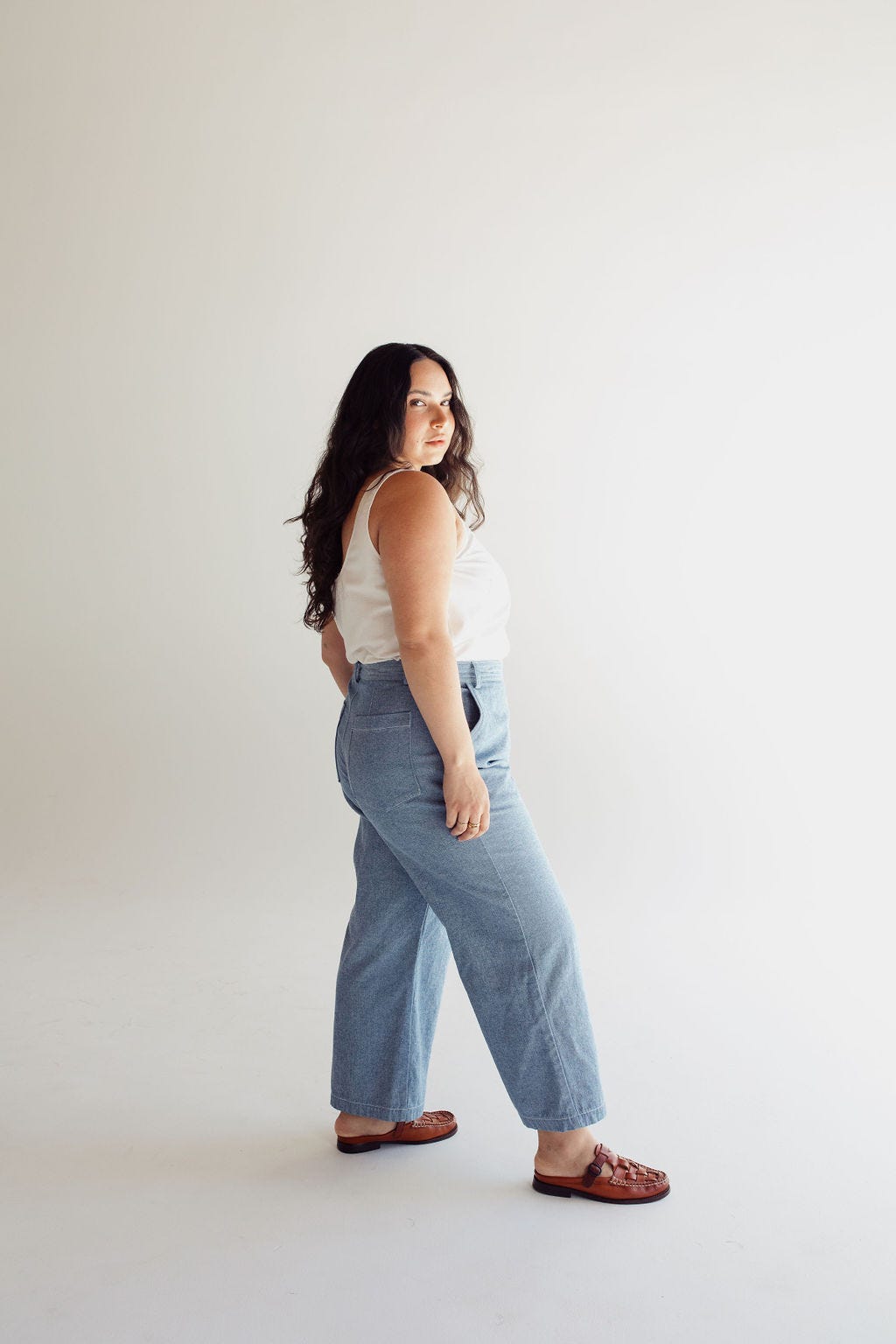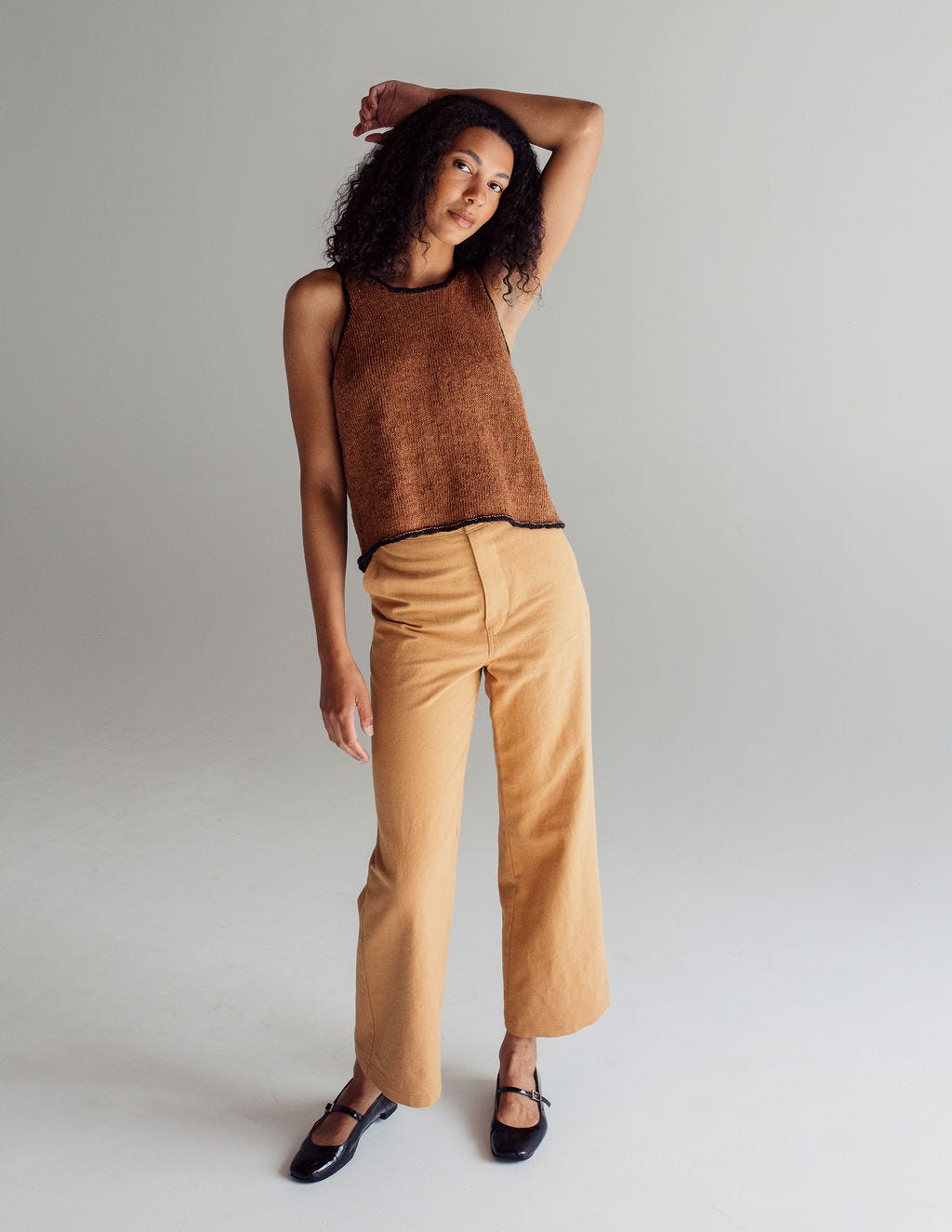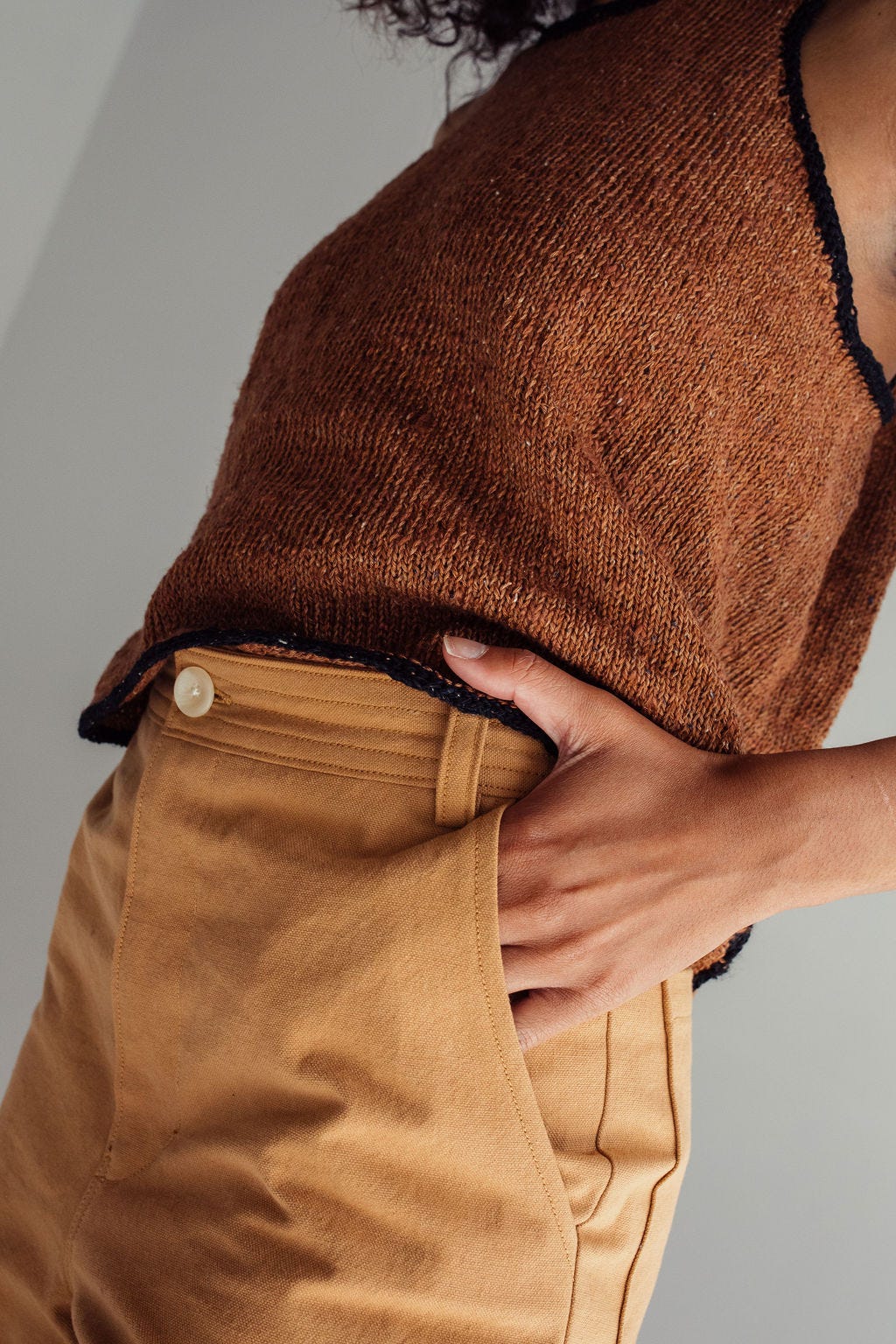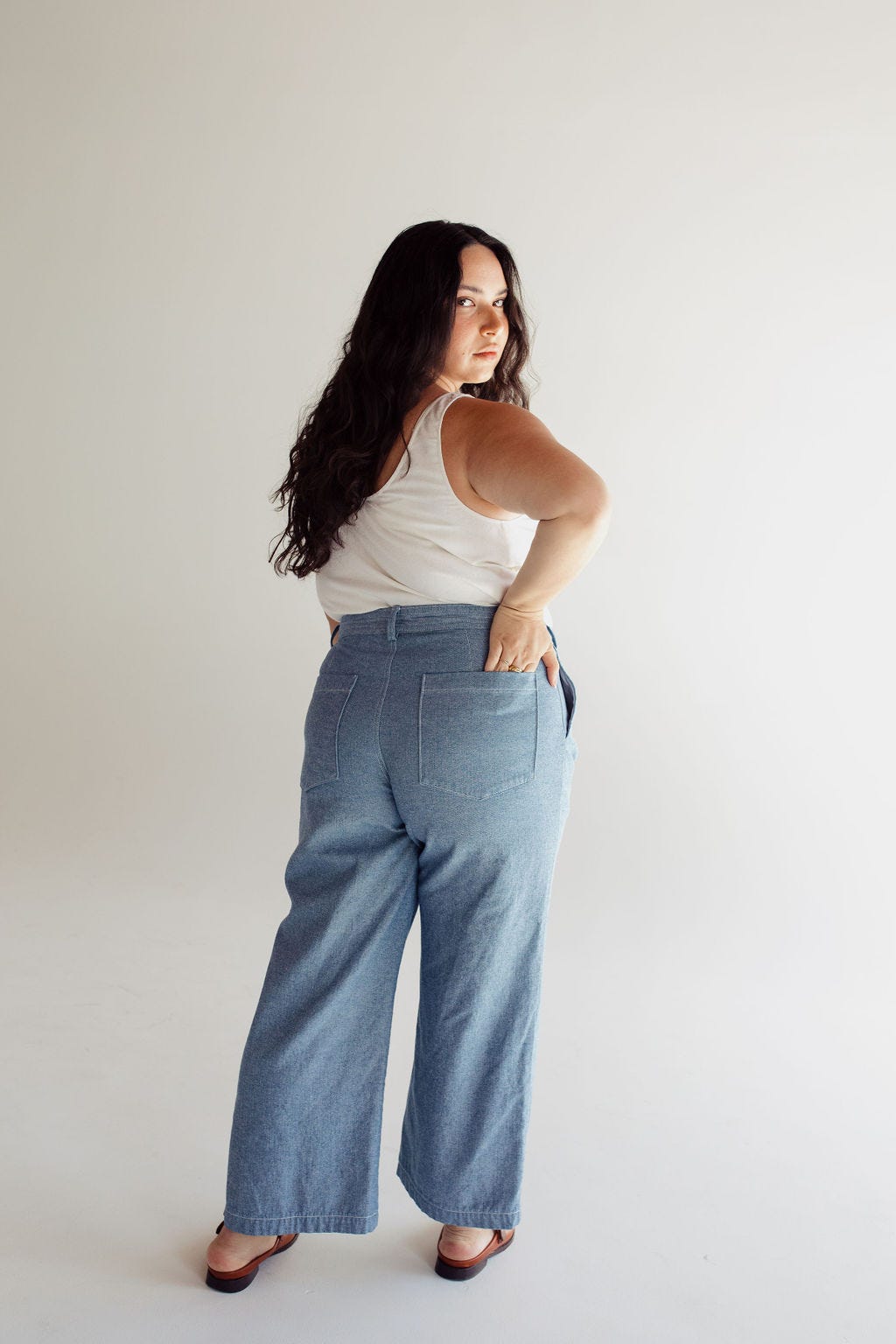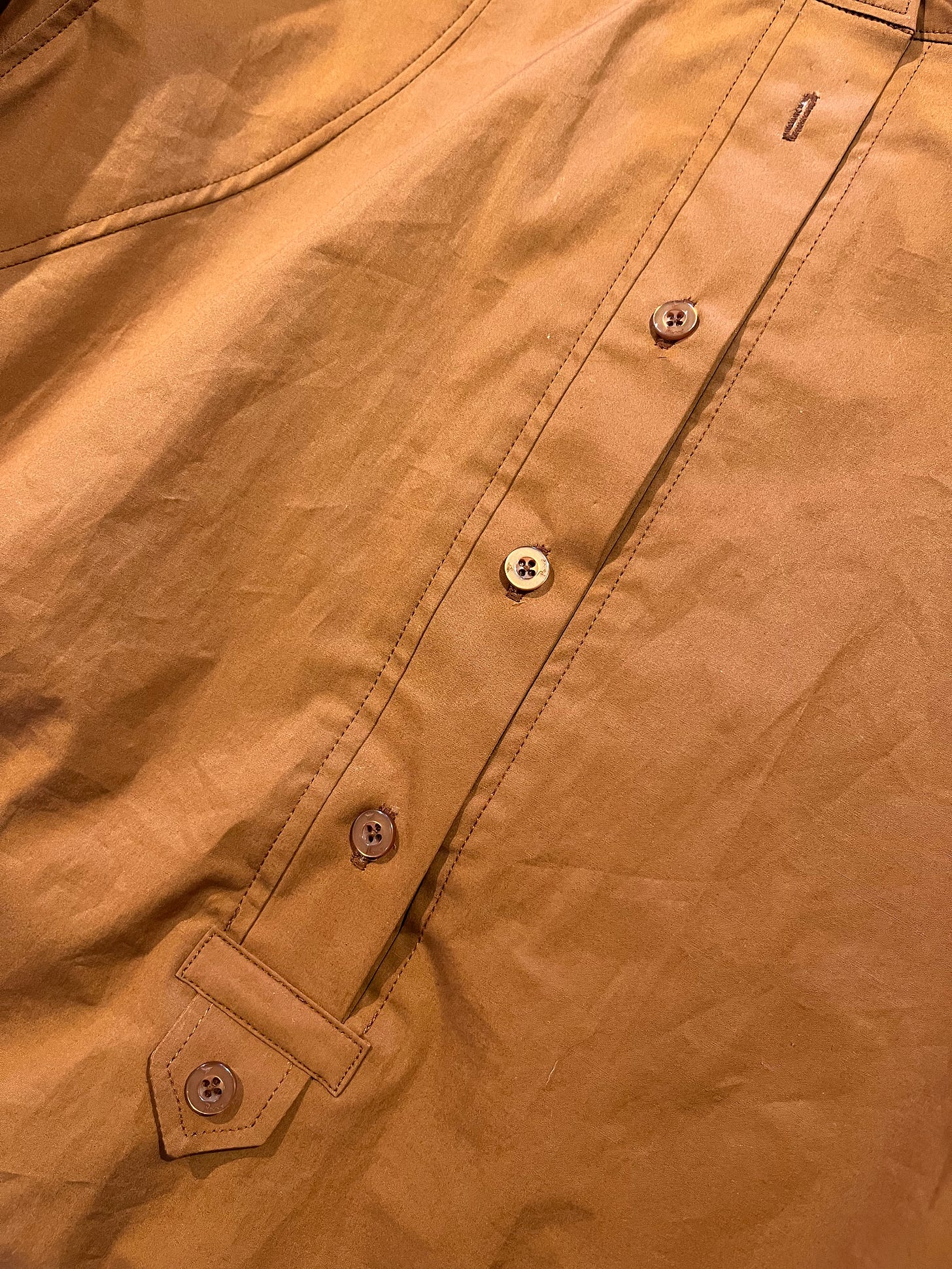Here we are again with yet another pant sewing patterns. As I’ve said previously, I love pants. I can’t image living in an era when women weren’t allowed to wear them. I wouldn’t do well.
I mentioned last year that this particular style, high waist + wide leg, was collecting dust in my drawers but over this past winter I found myself grabbing the one pair I have left more often and realized, yea these are keepers but I can’t do the zero side seam versions anymore. The curves need more room!
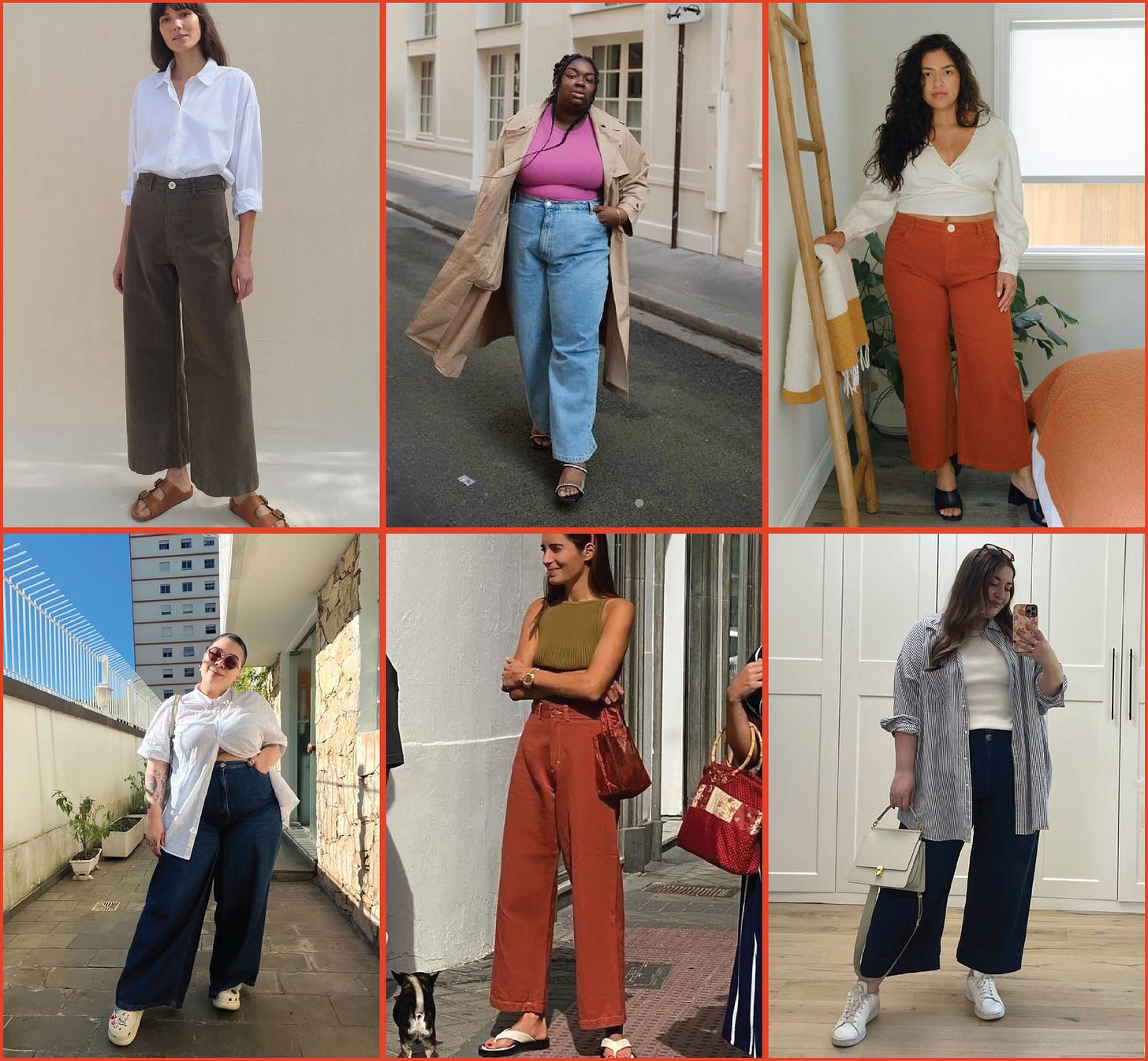
I hemmed and hawed over even creating this silhouette because there are already so many sailor-esque sewing patterns out there. Why add to the noise? But mine is not theirs and theirs it not mine. All bodies are different and someone else’s sailor may work for you or maybe you’re still looking for the right sailor.
So with that I give you my sailor, the Brier Pant.
Bringing this sewing pattern to market came from a few reason. One, I’ve personally received requests and seen pain points around IG about this silhouette being difficult for larger bodies, specifically the lack of side seam versions. Two, I’ve been wanting to do a trapunto waistband on something and these felt like the right home for it. Three, this silhouette is firmly a classic style that will run you for years [I love the barrels but my prediction is they will start phasing out by next year. Particularly the extreme balloons].
Let’s talk about this first point though. When you remove side seams you rely on the rises more to give you shaping. The front rise is typically drafted to be a veeeery small dart and the back a substantial one. By increasing these areas (because you can only make a side seam dart so big) the distribution of shape gets distorted away from “typical” women’s body shapes [I’m being very general here and speaking more towards pattern “rules”. This increase can work for curvier people, it all depends on where weight is carried!]
Side seams allow you to add slight shaping, while still keeping the slim hip look, that cups to the body and prevents it from riding up too much. As we walk and move around, tight areas of a garment will want to find smaller areas of the body that they fit better into. This is why we see no side seam pants travel up and then be extremely uncomfortable in the crotch….and no one wants that. Plus we are not perfect cylinders in circumference so the more seams you have the better your body will mold the fabric to itself.
Speaking of fabric, this pant can handle all levels of twill (denim) or plain weaves (canvas, drill) but the goldilocks is somewhere around 10oz. As with most pant creating, the heavier or lighter the fabric PLUS the weave will result in different fits. Add on top of that our good friend time to get the true nature of the final outcome. I always suggest buying double fabric to make a wearable muslin to allow your body time to break in the fabric before changing the pattern shape.
The trapunto on the waistband might be a big ask for some home sewing machines so test out the layers first to see how well your machine can handle it. In the instructions you’ll see areas to trim down seams and use a hammer to help reduce the bulk for this topstitching. My favorite tool here is the use of a cording foot. This foot is offset with the needle running on the left or right side (feet are sold as left side cording foot or right side cording foot). You can run these down the middle area of the waistband that is just two layers of fabric without having to deal with the bulky top edge or waist join seam.
-
2 Size Ranges : DD (0 - 20) / JJ (16 - 34)
-
Max Waist : 57 1/2” (146cm) / Max Hip : 66 1/2” (169cm)
-
Built for non-stretch denim/twill/drill/canvas
-
A very enjoyable sew with this mid weight denim (sample above is wrong side out)
-
My preferred topstitching thread
I’m also looking for testers for an upcoming shirt/shirtdress pattern the Bonnet Shirt!
5.3 : Sign Up Closed



